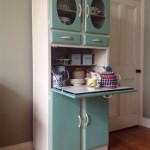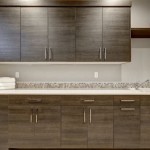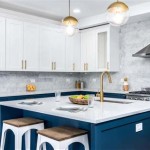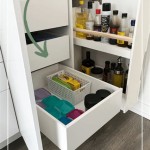Understanding the Landscape of Mid-Range Kitchen Cabinets
Kitchen cabinets are a foundational element of any kitchen design, impacting both its aesthetic appeal and functional efficiency. The market offers a diverse range of cabinet options, categorized broadly into budget-friendly, mid-range, and high-end segments. Understanding the characteristics and considerations surrounding mid-range kitchen cabinets is crucial for homeowners seeking a balance between quality, style, and affordability. This article aims to explore the nuances of this cabinet category, providing a comprehensive overview of their features, materials, advantages, and factors to consider during selection.
Mid-range kitchen cabinets represent a significant step up from entry-level options in terms of both construction quality and design versatility. They typically incorporate better materials, more sophisticated construction techniques, and a wider array of finish options. This allows for a more personalized and durable kitchen design that reflects individual tastes and lifestyle needs. While not offering the bespoke customization of high-end cabinetry, mid-range options provide a substantial upgrade in terms of aesthetics and longevity.
Key Features and Material Choices in Mid-Range Cabinets
One of the defining characteristics of mid-range kitchen cabinets is the improved quality of materials utilized in their construction. While entry-level cabinets often rely heavily on particleboard and thin veneers, mid-range options frequently feature plywood boxes, solid wood door frames, and thicker veneers. This translates into greater structural integrity and resistance to warping, moisture damage, and everyday wear and tear.
Plywood, compared to particleboard, offers superior screw holding capabilities and is less prone to swelling when exposed to moisture. Solid wood frames provide increased durability and a more premium appearance to the cabinet doors and drawer fronts. Thicker veneers, typically made of real wood, enhance the visual appeal and offer a more authentic wood grain texture. These material upgrades contribute significantly to the overall lifespan and aesthetic value of the cabinets.
The types of wood used in mid-range cabinets can vary, affecting both the price and the appearance. Popular choices include maple, oak, birch, and cherry. Maple offers a smooth, paintable surface and a neutral color. Oak is known for its distinctive grain pattern and inherent strength. Birch is a cost-effective option that accepts stains well. Cherry provides a rich, reddish-brown hue and a luxurious feel. The selection of wood species depends on the desired aesthetic and budget considerations.
The finishes available for mid-range cabinets are also more diverse than those found in budget-friendly options. Homeowners can choose from a wide range of stains, paints, and glazes to achieve the desired look. Modern finishing techniques, such as catalyzed conversion varnishes, provide increased durability and resistance to scratches, stains, and yellowing. These finishes not only enhance the aesthetic appeal of the cabinets but also contribute to their long-term maintenance and performance.
Hardware is another area where mid-range cabinets exhibit a notable upgrade. Higher-quality hinges, drawer slides, and knobs or pulls are standard features. Soft-close mechanisms for drawers and doors are increasingly common, providing a luxurious feel and preventing slamming. These hardware upgrades enhance the functionality and user experience of the kitchen.
Advantages of Selecting Mid-Range Kitchen Cabinets
Choosing mid-range kitchen cabinets offers several distinct advantages over both budget-friendly and high-end options. One of the primary benefits is the balance between cost and quality. These cabinets provide a significant improvement in materials and construction compared to entry-level alternatives, without incurring the substantial price premium associated with custom or high-end cabinetry.
The increased durability of mid-range cabinets translates into a longer lifespan, reducing the need for frequent replacements. The use of plywood boxes, solid wood frames, and durable finishes ensures that the cabinets can withstand the rigors of daily use in a busy kitchen environment. This represents a long-term investment in the value and functionality of the home.
Another advantage is the wider range of styles and design options available. Mid-range cabinet manufacturers typically offer a variety of door styles, finishes, and hardware choices, allowing homeowners to create a personalized kitchen design that reflects their individual tastes and preferences. This level of customization is often limited in budget-friendly options and requires a significantly higher investment in high-end cabinetry.
Moreover, mid-range cabinets often come with better warranties compared to budget-friendly options. These warranties provide peace of mind and protection against manufacturing defects or material failures. The duration and scope of the warranty can vary among manufacturers, so it is important to carefully review the warranty terms before making a purchase.
Finally, mid-range cabinets can offer a better return on investment compared to high-end options. While high-end cabinets may offer superior craftsmanship and exclusive designs, the added cost may not always translate into a proportional increase in home value. Mid-range cabinets provide a significant upgrade in quality and aesthetics at a more reasonable price point, making them a smart choice for homeowners seeking to enhance the value and appeal of their home without overspending.
Factors to Consider When Selecting Mid-Range Cabinets
Selecting the right mid-range kitchen cabinets requires careful consideration of several factors. One of the most important is the overall kitchen design and layout. The style, color, and configuration of the cabinets should complement the existing architectural features and the homeowner's personal aesthetic preferences.
The size and configuration of the kitchen space also play a crucial role in cabinet selection. Consider the available wall space, the placement of appliances, and the desired workflow within the kitchen. Base cabinets, wall cabinets, and specialty cabinets should be chosen based on the specific needs and requirements of the space.
The quality of construction is another critical factor to evaluate. Examine the cabinet boxes, door frames, and drawer boxes for signs of sturdiness and durability. Check the joints for tight connections and the hardware for smooth operation. Pay attention to the details, as they can indicate the overall quality of the cabinets.
The finish quality is also important to consider. Ensure that the finish is smooth, even, and resistant to scratches, stains, and fading. Examine the edges and corners for proper sealing and coverage. Choose a finish that complements the overall kitchen design and is easy to clean and maintain.
The manufacturer's reputation and warranty are also important factors to consider. Research the manufacturer's track record and read reviews from other customers. Review the warranty terms carefully and understand the coverage and limitations. Choose a manufacturer that offers a comprehensive warranty and has a reputation for quality and customer service.
Budget is, of course, a significant consideration. Determine a realistic budget for the cabinet project and compare prices from different manufacturers and retailers. Be sure to factor in the cost of installation, hardware, and any necessary modifications to the kitchen space. It is important to strike a balance between cost and quality, choosing cabinets that offer the best value within the allocated budget.
Finally, consider the environmental impact of the cabinets. Look for cabinets that are made from sustainable materials and manufactured using environmentally friendly processes. Choose cabinets that are certified by organizations such as the Forest Stewardship Council (FSC) or the Kitchen Cabinet Manufacturers Association (KCMA) Environmental Stewardship Program. This can help reduce the environmental footprint of the kitchen renovation project.

High End Style For Mid Range Kitchens Cabinets Of The Desert

What A Budget Mid Range And Luxury Kitchen Renovation Actually Cost

The Best Kitchen Cabinet Types For Your Style And Budget

41 Mid Century Modern Kitchen Ideas For 2024

Kitchen Interior Design Cost In Designcafe

Best Kitchen Cabinets For Your Home The Depot

Semi Custom Kitchen And Bath Cabinets Mid Continent Cabinetry

How To Choose New Kitchen Cabinets

The Best Kitchen Cabinet Types For Your Style And Budget

Your New Mid Range Remodel Geneva Lakefront Realty
Related Posts








